Ivory Trade
-
Klipspringer
- Global Moderator
- Posts: 5862
- Joined: Sat Sep 14, 2013 12:34 pm
- Country: Germany
- Contact:
Re: Ivory Trade
Ja, but it is probably naive to think that the income goes directly to elephant conservation.
- Lisbeth
- Site Admin
- Posts: 67457
- Joined: Sat May 19, 2012 12:31 pm
- Country: Switzerland
- Location: Lugano
- Contact:
Re: Ivory Trade
Worrying signs for elephant conservation: Data shows 2020 rise in black-market ivory prices
By Global Initiative Against Transnational Organized Crime• 9 September 2021
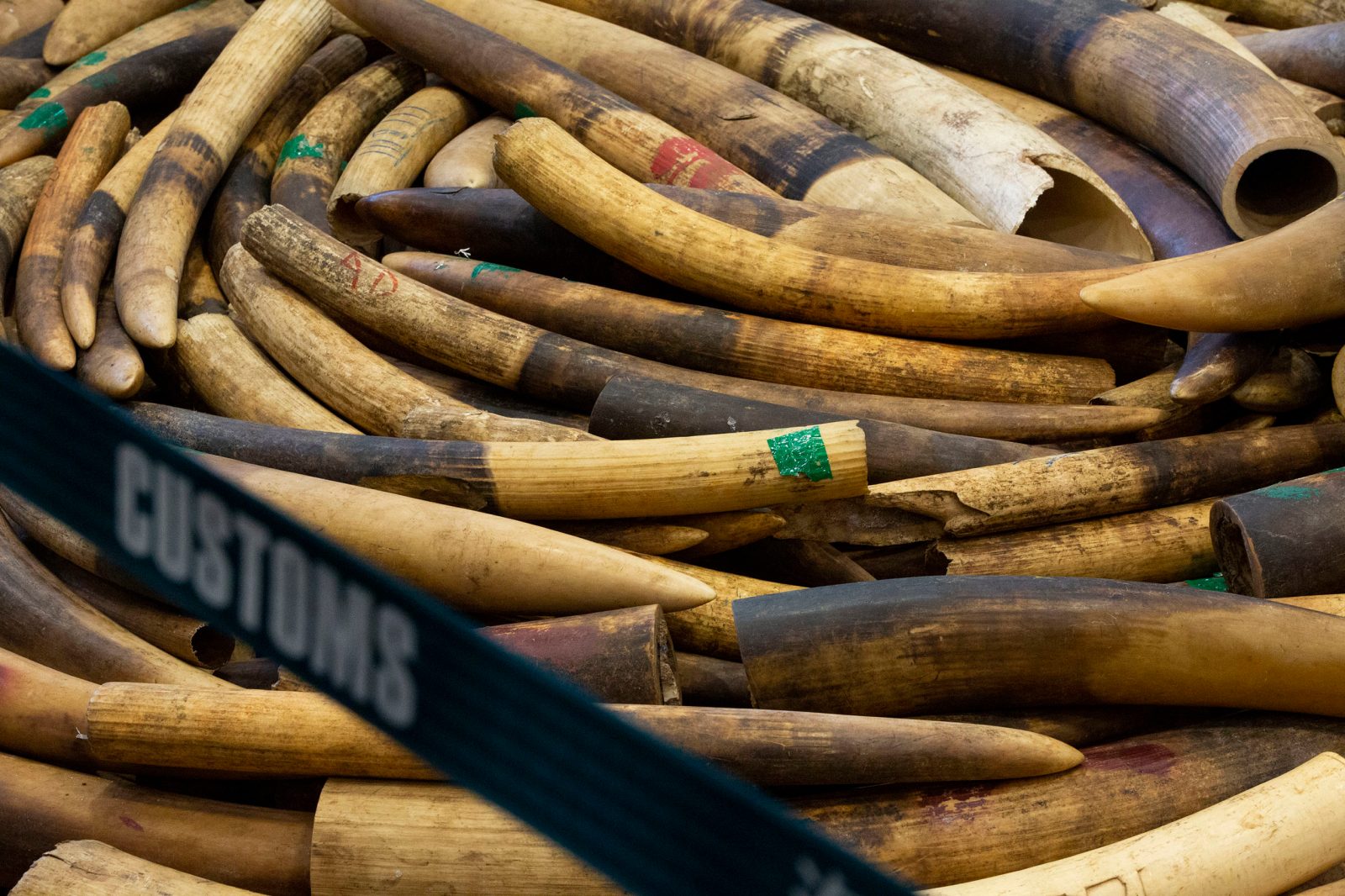
Seized elephant tusks displayed at a Hong Kong Customs press briefing in Kowloon, 1 February 2019. (Photo: EPA-EFE / Alex Hofford)
Recent analysis from the Global Initiative Against Transnational Organized Crime has found that reported prices for illegal ivory rose in 2020 — the first increase since the peak of global ivory prices in 2014. Rising prices, along with the disruption to ivory supplies caused by the pandemic, may be a warning sign of increased illicit ivory trade in future, and a threat to the successes in countering elephant poaching in East and southern Africa.
When researching the illegal ivory trade, there are a few key metrics to look at. First among these are measures of illegal elephant killings, which can shed light on where the main supply sources of illegal ivory are, and how much ivory is entering illegal trade through poaching channels. In 2019, elephant poaching rates hit their lowest level since 2003 (which is when systematic records began via the Monitoring the Illegal Killing of Elephants [MIKE] programme).
Estimates of the numbers of elephants killed annually have fallen for East and southern Africa relative to populations in central Africa. This reflects how the epicentre of ivory poaching activity has shifted to West and Central Africa, following successes in countering ivory poaching and trafficking in East and southern African countries.
Analysis of the number and weight of ivory seizures can also give information about the main supply sources and consumer demand hotspots. Seizures in transit countries can also offer valuable information on the transport routes through which illegal ivory moves. For example, analysis by monitoring organisation Center for Advanced Defense Studies (C4Ads) suggests that global seizures of ivory, rhino horn and pangolin scales fell sharply in 2020. Conservation organisations have warned that this may foreshadow an impending “illicit-trade boom”, whereby stockpiled wildlife products that could not be moved under Covid-19 restrictions are released and hit the market, while the economic impacts of the pandemic on wildlife source countries manifest in increased poaching.

The number of ivory seizure cases and estimated weight of ivory by year, 1989–2019.
The use of ivory price data can also provide another window into the dynamics of illicit trade. New Global Initiative Against Transnational Organized Crime (Gi-Toc) analysis has looked at trends in black-market ivory prices since the beginning of the century to investigate what price trends may portend for illicit ivory trade in East and southern Africa.
Counting the cost
Price data, when compared over time, provides an insight into levels of demand for (and supply of) illegal wildlife products and can help predict future trends in poaching and illegal trade. This is a different insight into the illegal trade than other measures such as poaching incidents and seizures. Poaching incidents are not the only means by which ivory may enter illegal trade (for example, thefts from legal ivory stockpiles can feed the illicit market) and seizures only capture a small proportion of the illicit ivory on the market, and so may not reflect actual illegal trade trends. Price data, by contrast, reflects the assessment of supply and demand by actors within the illicit trade itself.

A Kenya Wildlife Service (KWS) ranger arranges Ivory at a burning site after offloading them from a container at the KWS headquarters in Nairobi, Kenya, 20 April 2016. Media reports on 10 October 2017 state that British London Metropolitan Police Service (MPS) forensic expert Mark Moseley who works at crime scenes for the MPS, has developed the kit in his spare time after being asked by his two daughters to find a way to save elephants. It can allow fingerprints to be obtained from ivory for up to 28 days after it has been handled. The ivory fingerprinting kit has been presented by The International Fund for Animal Welfare (IFAW) for use by the Kenya Wildlife Service. EPA-EFE/DANIEL IRUNGU
This is especially true for prices at early stages of the illegal wildlife market, such as prices charged by poachers and exporters in source countries. Data for a “raw” product such as ivory is also more likely to reflect direct demand and supply factors than prices for processed wildlife products such as worked ivory. For worked products, other variables may influence price, including quality, the unknown quantity of wildlife material within the worked product (as in medicinal products), location sold (street or online price is much lower for the identical product than in a luxury boutique or auction house) and purchasing power of the buyer.
However, collecting price data for illicit products such as ivory is difficult to do accurately because of the covert nature of the market and the supply chains that feed it. There is little opportunity for researchers to check or cross-reference price estimates from different sources in the illicit market, and the factors causing prices to vary across time and geographies may not be visible to the outside observer. Another issue in tracking ivory prices over time is that often prices are reported in research in US dollars, meaning that fluctuating exchange rates may distort actual reported prices. As our research into drug pricing has also found, difficulties in measuring illicit commodity prices become an issue when these estimates are used in court proceedings and sentencing, which is the case in some countries in East and southern Africa, including Tanzania, in wildlife trafficking cases.
The ivory price rollercoaster
Our analysis brought together price data reported from sources active in the illicit ivory trade — such as poachers and ivory traders — and price data recorded in other analyses, academic papers and reports, from 2000 to the present. The key finding was that after precipitous declines in raw ivory prices from late 2014, there was a surprising resurgence in wholesale ivory prices in 2020. This included a rise in the ivory wholesale price in China, from about $750/kilogramme in early 2017 to almost double that in late 2020. A less drastic price rise was also observed in Vietnam, with the price of ivory hitting $689/kg in 2020 compared with an average of $629/kg in 2018. Prices reported by poachers in Kenya also showed a slight increase in prices from 2018.

Raw ivory price trends at the poacher and import country wholesale points in the trade chain, using Kenya, Vietnam and China as examples, 1999–2020.
These recent price rises should be watched closely and confirmed by further investigations. Why this is occurring is not immediately clear, although it may be because imports to destination and transit countries were restricted in 2020 because of the decrease in air travel during Covid-19 lockdown periods, which reduced supply.
The price rises in Asia could be a result of the resale of old stockpiled ivory, which would sell at a higher price than newly acquired ivory because the tusks were purchased when prices were higher. Alternatively, the Asian wholesale price increases in 2020 may be the consequence of ivory trafficking networks moving to West and Central Africa, where research suggests poacher and middleman supply prices are much higher than in East and southern Africa.
However, the 2020 price rises should be seen in the context of the 2014 global peak. In China, wholesale black market ivory prices rose rapidly between 2000 and 2014 from around $370/kg to an average of $2,572/kg in 2014. (Prices ranged from $1,710/kg to $3,740/kg in 2014, depending on weight and quality).
But prices then crashed, probably beginning in late 2014, to reach an average of $960/kg in 2015. In 2018, after China had closed the legal ivory market, prices hovered in the $1,000/kg range, according to a Chinese source, but in 2019 wildlife trade monitors Traffic China found that raw ivory importer selling prices were down to an average of about $570 per kilogramme. Prices in China are complicated by the fact that they are much higher in the north (Beijing) than in the south (Guangdong Province).
Similar trends were seen in poacher prices in Kenya. Reported prices from different parts of Kenya averaged about $15/kg in 1999. This price had doubled to $33/kg in 2008 and skyrocketed to $190/kg in 2014. By 2016 the average poacher price in Kenya had dropped to $88/kg, falling further to about $52/kg in 2018 (with a wide range of $30-$79/kg, indicating uncertainty in the market).
Recent studies have suggested that, in the aftermath of the global financial crisis, ivory prices rose as the commodity became sought after as an investment, much like other high-value commodities such as gold. As record gold prices in 2020 have again shown, these kinds of commodities rise in price amid financial uncertainty and crisis. In 2014, as ivory became less of an attractive investment option, prices once again began to fall. The same thing could happen with ivory prices during the post-Covid economic recovery, although it is too soon to ascertain any such trajectory.
What does the post-Covid world hold for elephants in East and southern Africa?
Countering ivory trafficking in East and southern Africa can be seen as a success story, as there has been a large-scale shift in illicit ivory sources from the region towards West and central Africa. Major ivory trafficking organisations have also been dismantled. For example, major traffickers Feisal Mohammed Ali, Yang ‘Ivory Queen’ Fenglan, Boniface ‘Shetani’ Malyango, Mateso ‘Chupi’ Kasian, several members of the Shuidong network, the Sheikhs gang, and the principal leaders of the Kromah network were all arrested between 2014 and 2020.

Malaysian wildlife officials prepare confiscated elephant ivory tusks before destroying the ivory, in Port Dickson, Negeri Sembilan, Malaysia, 30 April 2019. Malaysian authorities destroyed 3.92 tons of seized ivory tusks with an estimated value of 3.2 million US dollar as part of the country’s progress in combating the ivory trafficking and illegal trade. EPA-EFE/FAZRY ISMAIL
Domestic legal ivory markets in destination countries have been closed and civil society has had some success in changing consumer attitudes towards consuming ivory products.
However, the latest trends in ivory prices mean that there is a risk these successful trends may change. The recent rises in ivory wholesale price, if sustained, may spur increased levels of poaching in future. With large potential profits to be made, criminal networks that have been dismantled by law enforcement may become active again if prosecutions are unsuccessful or associates are not prosecuted, and new ones may emerge.
Despite progress, the demand for illicit ivory is still there, and so the threat to elephants in East and southern Africa — which hosts the largest populations of elephants in absolute numbers — remains. DM
The Global Initiative is a network of more than 500 experts on organised crime drawn from law enforcement, academia, conservation, technology, media, the private sector and development agencies. It publishes research and analysis on emerging criminal threats and works to develop innovative strategies to counter organised crime globally. To receive monthly Risk Bulletin updates, please sign up here. This article also draws on research from the Gi-Toc brief ‘African elephant ivory’, by Daniel Stiles, the first in a series that examines market dynamics and prices of selected live and derivative products in illegal wildlife trade. Available at: https://globalinitiative.net analysis african-elephant-ivory/.
By Global Initiative Against Transnational Organized Crime• 9 September 2021

Seized elephant tusks displayed at a Hong Kong Customs press briefing in Kowloon, 1 February 2019. (Photo: EPA-EFE / Alex Hofford)
Recent analysis from the Global Initiative Against Transnational Organized Crime has found that reported prices for illegal ivory rose in 2020 — the first increase since the peak of global ivory prices in 2014. Rising prices, along with the disruption to ivory supplies caused by the pandemic, may be a warning sign of increased illicit ivory trade in future, and a threat to the successes in countering elephant poaching in East and southern Africa.
When researching the illegal ivory trade, there are a few key metrics to look at. First among these are measures of illegal elephant killings, which can shed light on where the main supply sources of illegal ivory are, and how much ivory is entering illegal trade through poaching channels. In 2019, elephant poaching rates hit their lowest level since 2003 (which is when systematic records began via the Monitoring the Illegal Killing of Elephants [MIKE] programme).
Estimates of the numbers of elephants killed annually have fallen for East and southern Africa relative to populations in central Africa. This reflects how the epicentre of ivory poaching activity has shifted to West and Central Africa, following successes in countering ivory poaching and trafficking in East and southern African countries.
Analysis of the number and weight of ivory seizures can also give information about the main supply sources and consumer demand hotspots. Seizures in transit countries can also offer valuable information on the transport routes through which illegal ivory moves. For example, analysis by monitoring organisation Center for Advanced Defense Studies (C4Ads) suggests that global seizures of ivory, rhino horn and pangolin scales fell sharply in 2020. Conservation organisations have warned that this may foreshadow an impending “illicit-trade boom”, whereby stockpiled wildlife products that could not be moved under Covid-19 restrictions are released and hit the market, while the economic impacts of the pandemic on wildlife source countries manifest in increased poaching.

The number of ivory seizure cases and estimated weight of ivory by year, 1989–2019.
The use of ivory price data can also provide another window into the dynamics of illicit trade. New Global Initiative Against Transnational Organized Crime (Gi-Toc) analysis has looked at trends in black-market ivory prices since the beginning of the century to investigate what price trends may portend for illicit ivory trade in East and southern Africa.
Counting the cost
Price data, when compared over time, provides an insight into levels of demand for (and supply of) illegal wildlife products and can help predict future trends in poaching and illegal trade. This is a different insight into the illegal trade than other measures such as poaching incidents and seizures. Poaching incidents are not the only means by which ivory may enter illegal trade (for example, thefts from legal ivory stockpiles can feed the illicit market) and seizures only capture a small proportion of the illicit ivory on the market, and so may not reflect actual illegal trade trends. Price data, by contrast, reflects the assessment of supply and demand by actors within the illicit trade itself.

A Kenya Wildlife Service (KWS) ranger arranges Ivory at a burning site after offloading them from a container at the KWS headquarters in Nairobi, Kenya, 20 April 2016. Media reports on 10 October 2017 state that British London Metropolitan Police Service (MPS) forensic expert Mark Moseley who works at crime scenes for the MPS, has developed the kit in his spare time after being asked by his two daughters to find a way to save elephants. It can allow fingerprints to be obtained from ivory for up to 28 days after it has been handled. The ivory fingerprinting kit has been presented by The International Fund for Animal Welfare (IFAW) for use by the Kenya Wildlife Service. EPA-EFE/DANIEL IRUNGU
This is especially true for prices at early stages of the illegal wildlife market, such as prices charged by poachers and exporters in source countries. Data for a “raw” product such as ivory is also more likely to reflect direct demand and supply factors than prices for processed wildlife products such as worked ivory. For worked products, other variables may influence price, including quality, the unknown quantity of wildlife material within the worked product (as in medicinal products), location sold (street or online price is much lower for the identical product than in a luxury boutique or auction house) and purchasing power of the buyer.
However, collecting price data for illicit products such as ivory is difficult to do accurately because of the covert nature of the market and the supply chains that feed it. There is little opportunity for researchers to check or cross-reference price estimates from different sources in the illicit market, and the factors causing prices to vary across time and geographies may not be visible to the outside observer. Another issue in tracking ivory prices over time is that often prices are reported in research in US dollars, meaning that fluctuating exchange rates may distort actual reported prices. As our research into drug pricing has also found, difficulties in measuring illicit commodity prices become an issue when these estimates are used in court proceedings and sentencing, which is the case in some countries in East and southern Africa, including Tanzania, in wildlife trafficking cases.
The ivory price rollercoaster
Our analysis brought together price data reported from sources active in the illicit ivory trade — such as poachers and ivory traders — and price data recorded in other analyses, academic papers and reports, from 2000 to the present. The key finding was that after precipitous declines in raw ivory prices from late 2014, there was a surprising resurgence in wholesale ivory prices in 2020. This included a rise in the ivory wholesale price in China, from about $750/kilogramme in early 2017 to almost double that in late 2020. A less drastic price rise was also observed in Vietnam, with the price of ivory hitting $689/kg in 2020 compared with an average of $629/kg in 2018. Prices reported by poachers in Kenya also showed a slight increase in prices from 2018.

Raw ivory price trends at the poacher and import country wholesale points in the trade chain, using Kenya, Vietnam and China as examples, 1999–2020.
These recent price rises should be watched closely and confirmed by further investigations. Why this is occurring is not immediately clear, although it may be because imports to destination and transit countries were restricted in 2020 because of the decrease in air travel during Covid-19 lockdown periods, which reduced supply.
The price rises in Asia could be a result of the resale of old stockpiled ivory, which would sell at a higher price than newly acquired ivory because the tusks were purchased when prices were higher. Alternatively, the Asian wholesale price increases in 2020 may be the consequence of ivory trafficking networks moving to West and Central Africa, where research suggests poacher and middleman supply prices are much higher than in East and southern Africa.
However, the 2020 price rises should be seen in the context of the 2014 global peak. In China, wholesale black market ivory prices rose rapidly between 2000 and 2014 from around $370/kg to an average of $2,572/kg in 2014. (Prices ranged from $1,710/kg to $3,740/kg in 2014, depending on weight and quality).
But prices then crashed, probably beginning in late 2014, to reach an average of $960/kg in 2015. In 2018, after China had closed the legal ivory market, prices hovered in the $1,000/kg range, according to a Chinese source, but in 2019 wildlife trade monitors Traffic China found that raw ivory importer selling prices were down to an average of about $570 per kilogramme. Prices in China are complicated by the fact that they are much higher in the north (Beijing) than in the south (Guangdong Province).
Similar trends were seen in poacher prices in Kenya. Reported prices from different parts of Kenya averaged about $15/kg in 1999. This price had doubled to $33/kg in 2008 and skyrocketed to $190/kg in 2014. By 2016 the average poacher price in Kenya had dropped to $88/kg, falling further to about $52/kg in 2018 (with a wide range of $30-$79/kg, indicating uncertainty in the market).
Recent studies have suggested that, in the aftermath of the global financial crisis, ivory prices rose as the commodity became sought after as an investment, much like other high-value commodities such as gold. As record gold prices in 2020 have again shown, these kinds of commodities rise in price amid financial uncertainty and crisis. In 2014, as ivory became less of an attractive investment option, prices once again began to fall. The same thing could happen with ivory prices during the post-Covid economic recovery, although it is too soon to ascertain any such trajectory.
What does the post-Covid world hold for elephants in East and southern Africa?
Countering ivory trafficking in East and southern Africa can be seen as a success story, as there has been a large-scale shift in illicit ivory sources from the region towards West and central Africa. Major ivory trafficking organisations have also been dismantled. For example, major traffickers Feisal Mohammed Ali, Yang ‘Ivory Queen’ Fenglan, Boniface ‘Shetani’ Malyango, Mateso ‘Chupi’ Kasian, several members of the Shuidong network, the Sheikhs gang, and the principal leaders of the Kromah network were all arrested between 2014 and 2020.

Malaysian wildlife officials prepare confiscated elephant ivory tusks before destroying the ivory, in Port Dickson, Negeri Sembilan, Malaysia, 30 April 2019. Malaysian authorities destroyed 3.92 tons of seized ivory tusks with an estimated value of 3.2 million US dollar as part of the country’s progress in combating the ivory trafficking and illegal trade. EPA-EFE/FAZRY ISMAIL
Domestic legal ivory markets in destination countries have been closed and civil society has had some success in changing consumer attitudes towards consuming ivory products.
However, the latest trends in ivory prices mean that there is a risk these successful trends may change. The recent rises in ivory wholesale price, if sustained, may spur increased levels of poaching in future. With large potential profits to be made, criminal networks that have been dismantled by law enforcement may become active again if prosecutions are unsuccessful or associates are not prosecuted, and new ones may emerge.
Despite progress, the demand for illicit ivory is still there, and so the threat to elephants in East and southern Africa — which hosts the largest populations of elephants in absolute numbers — remains. DM
The Global Initiative is a network of more than 500 experts on organised crime drawn from law enforcement, academia, conservation, technology, media, the private sector and development agencies. It publishes research and analysis on emerging criminal threats and works to develop innovative strategies to counter organised crime globally. To receive monthly Risk Bulletin updates, please sign up here. This article also draws on research from the Gi-Toc brief ‘African elephant ivory’, by Daniel Stiles, the first in a series that examines market dynamics and prices of selected live and derivative products in illegal wildlife trade. Available at: https://globalinitiative.net analysis african-elephant-ivory/.
"Education is the most powerful weapon which you can use to change the world." Nelson Mandela
The desire for equality must never exceed the demands of knowledge
The desire for equality must never exceed the demands of knowledge
- Richprins
- Committee Member
- Posts: 76013
- Joined: Sat May 19, 2012 3:52 pm
- Location: NELSPRUIT
- Contact:
Re: Ivory Trade
Please check Needs Attention pre-booking: https://africawild-forum.com/viewtopic.php?f=322&t=596
- RogerFraser
- Site Admin
- Posts: 6003
- Joined: Wed Sep 18, 2013 9:36 pm
- Country: South Africa
- Location: Durban
- Contact:
Mozambique: Tuskless elephant evolution linked to ivory hunting
https://www.bbc.com/news/world-africa-59008037
Mozambique: Tuskless elephant evolution linked to ivory hunting
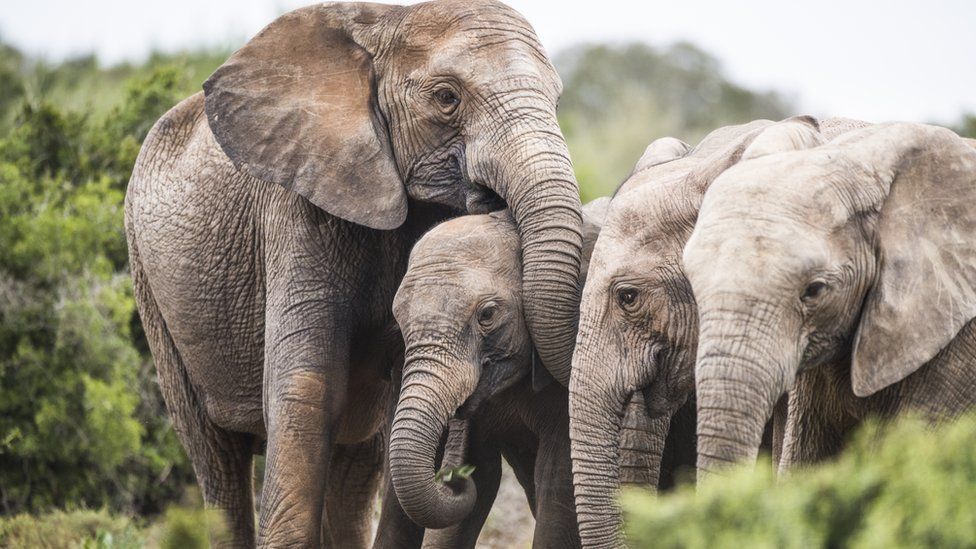
A new study suggests that severe ivory poaching in parts of Mozambique has led to the evolution of tuskless elephants.
The study https://www.science.org/doi/10.1126/science.abe7389 found that in Gorongosa National Park a previously rare genetic condition had became more common as ivory poaching used to finance a civil war pushed the species to the brink of extinction.
Before the war, about 18.5% of females were naturally tuskless.
But that figure has risen to 33% among elephants born since the early 1990s.
Some 90% of Mozambique's elephant population was slaughtered by fighters on both sides of the civil war that lasted from 1977 to 1992. Poachers sold the ivory to finance the vicious conflict between government forces and anti-communist insurgents.
As in eye colour and blood type in humans, genes are responsible for whether elephants inherit tusks from their parents.
Elephants without tusks were left alone by hunters, leading to an increased likelihood they would breed and pass on the tuskless trait to their offspring.
Researchers have long suspected that the trait, only seen in females, was linked to the sex of the elephant. After the genomes of tusked and tuskless elephants were sequenced, analysis revealed that the trend was linked to a mutation on the X chromosome that was fatal to males, which did not develop properly in the womb, and dominant in females.
The study's co-author, Professor Robert Pringle of Princeton University, pointed out that the discovery could have a number of long-term effects for the species.
He noted that because the tuskless trait was fatal to male offspring, it was possible that fewer elephants would be born overall. This could slow the recovery of the species, which now stands at just over 700 in the park.
"Tusklessness might be advantageous during a war," Professor Pringle said. "But that comes at a cost."
Another potential knock-on is changes to the broader landscape, as the study has revealed that tusked and tuskless animals eat different plants.
But Professor Pringle emphasised that the trait was reversible over time as populations recovered from the brink of elimination.
"So we actually expect that this syndrome will decrease in frequency in our study population, provided that the conservation picture continues to stay as positive as it has been recently," he said.
"There's such a blizzard of depressing news about biodiversity and humans in the environment and I think it's important to emphasise that there are some bright spots in that picture."
Mozambique: Tuskless elephant evolution linked to ivory hunting

A new study suggests that severe ivory poaching in parts of Mozambique has led to the evolution of tuskless elephants.
The study https://www.science.org/doi/10.1126/science.abe7389 found that in Gorongosa National Park a previously rare genetic condition had became more common as ivory poaching used to finance a civil war pushed the species to the brink of extinction.
Before the war, about 18.5% of females were naturally tuskless.
But that figure has risen to 33% among elephants born since the early 1990s.
Some 90% of Mozambique's elephant population was slaughtered by fighters on both sides of the civil war that lasted from 1977 to 1992. Poachers sold the ivory to finance the vicious conflict between government forces and anti-communist insurgents.
As in eye colour and blood type in humans, genes are responsible for whether elephants inherit tusks from their parents.
Elephants without tusks were left alone by hunters, leading to an increased likelihood they would breed and pass on the tuskless trait to their offspring.
Researchers have long suspected that the trait, only seen in females, was linked to the sex of the elephant. After the genomes of tusked and tuskless elephants were sequenced, analysis revealed that the trend was linked to a mutation on the X chromosome that was fatal to males, which did not develop properly in the womb, and dominant in females.
The study's co-author, Professor Robert Pringle of Princeton University, pointed out that the discovery could have a number of long-term effects for the species.
He noted that because the tuskless trait was fatal to male offspring, it was possible that fewer elephants would be born overall. This could slow the recovery of the species, which now stands at just over 700 in the park.
"Tusklessness might be advantageous during a war," Professor Pringle said. "But that comes at a cost."
Another potential knock-on is changes to the broader landscape, as the study has revealed that tusked and tuskless animals eat different plants.
But Professor Pringle emphasised that the trait was reversible over time as populations recovered from the brink of elimination.
"So we actually expect that this syndrome will decrease in frequency in our study population, provided that the conservation picture continues to stay as positive as it has been recently," he said.
"There's such a blizzard of depressing news about biodiversity and humans in the environment and I think it's important to emphasise that there are some bright spots in that picture."
- Richprins
- Committee Member
- Posts: 76013
- Joined: Sat May 19, 2012 3:52 pm
- Location: NELSPRUIT
- Contact:
Re: Mozambique: Tuskless elephant evolution linked to ivory hunting
Interesting! 
Please check Needs Attention pre-booking: https://africawild-forum.com/viewtopic.php?f=322&t=596
- Lisbeth
- Site Admin
- Posts: 67457
- Joined: Sat May 19, 2012 12:31 pm
- Country: Switzerland
- Location: Lugano
- Contact:
Re: Mozambique: Tuskless elephant evolution linked to ivory hunting
One of the predictable, devastating results of hunting/poaching tuskers 
What is the bright spot? that they return to eat what they ate before
What is the bright spot? that they return to eat what they ate before
"Education is the most powerful weapon which you can use to change the world." Nelson Mandela
The desire for equality must never exceed the demands of knowledge
The desire for equality must never exceed the demands of knowledge
- Peter Betts
- Posts: 3084
- Joined: Fri Jun 01, 2012 9:28 am
- Country: RSA
- Contact:
Re: Ivory Trade
Same historic fact re tuskless Cows in Addo .. where the herd was shot out to 11 left. Mozambique 70 years ago and longer had the Biggest Tuskers in Africa and the World Record no 2, 3 , and 4 come from Moz >> No 1 Tanganyika 1896 on the slopes of Kilimanjaro
- Lisbeth
- Site Admin
- Posts: 67457
- Joined: Sat May 19, 2012 12:31 pm
- Country: Switzerland
- Location: Lugano
- Contact:
Re: Ivory Trade
Good news for tuskers as Britain bans trade in ivory
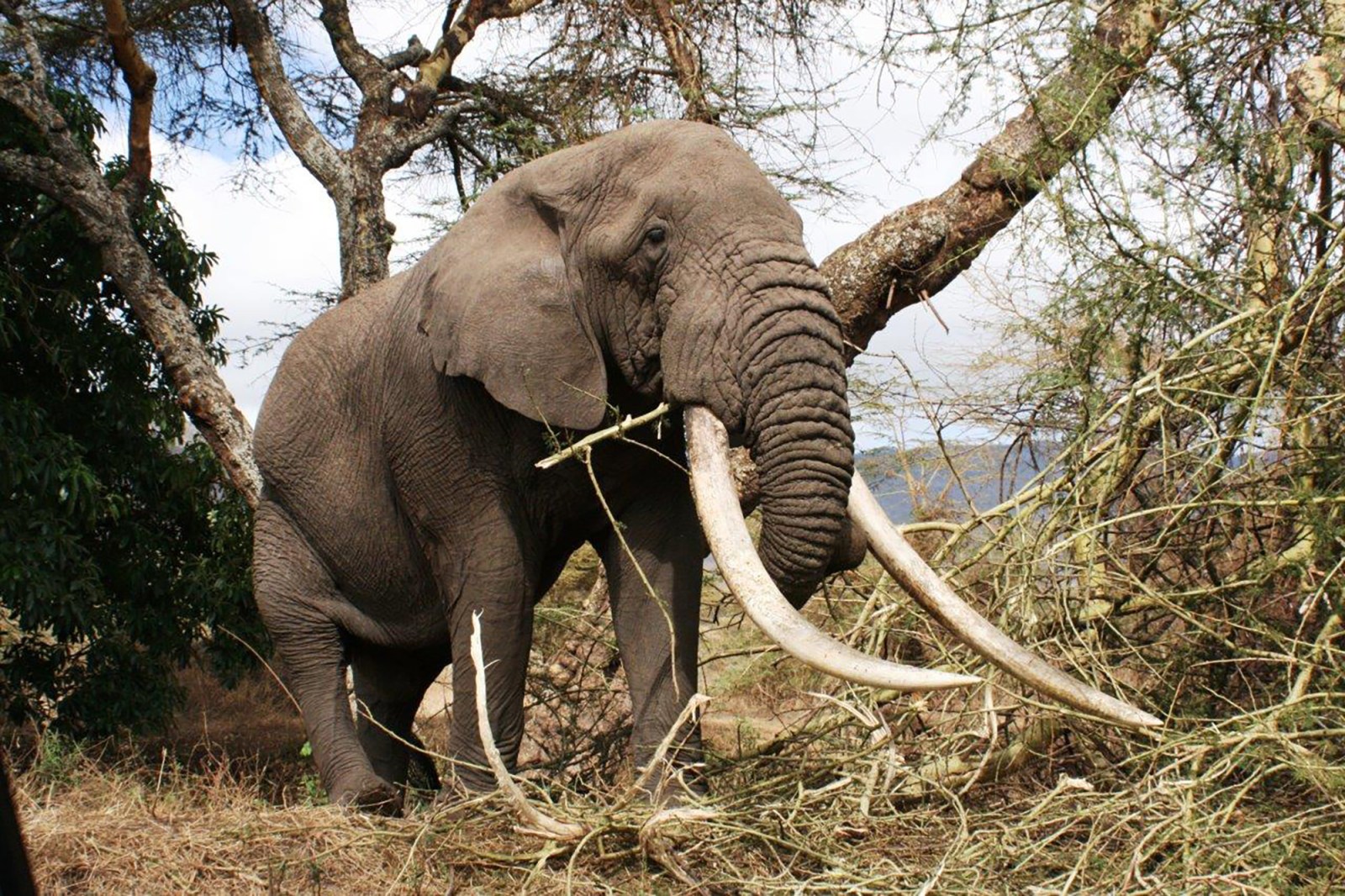
As far as the new UK Ivory Act is concerned, these tusks should not be parted from their elephants. (Photo: Conservation Action Trust)
By Don Pinnock | 07 Jun 2022
The UK Ivory Act came into force on Monday, 6 June, outlawing all ivory trade in Britain apart from a few narrow exemptions.
___________________________________________________________________________________________________________________________
From this week, dealing in almost all items made of or containing elephant ivory, regardless of their age, is illegal in Great Britain, the world’s leading exporter of antique ivory.
There are a few exemptions, which include portrait miniatures, musical instruments, items with low ivory content, sales to qualifying museums and rare/important items.
Those who break the law face prosecution and a fine of up to £250,000 or up to five years’ imprisonment.
This is good news for Africa’s elephants, which have suffered massive poaching to a point where, last year, the International Union for Conservation of Nature listed savanna elephants as endangered and forest elephants as critically endangered.
In the past 30 years, forest elephant numbers fell by 86% and within 50 years savanna elephant numbers dropped by 60%.
In 2015, most African elephant range states called for the urgent closure of all domestic ivory markets worldwide. This was closely followed by a resolution adopted by member governments of the UN wildlife trade organisation CITES, calling for countries to close remaining domestic ivory markets.
Many countries heeded this call. The United States enacted major restrictions to close its market and China, which was once home to the world’s largest legal ivory market, closed its market in 2017.
This was followed by countries as diverse as Singapore and a number of African countries. The European Union has yet to follow suit, although it has published new, tougher guidelines.
The road to implementation of the UK Ivory Act has been slow.
The government first pledged to close its ivory market in 2010, but it took a further seven years before a public consultation on the matter opened towards the end of 2017. This eventually received more than 70,000 responses, the overwhelming majority favouring a comprehensive ban, which also enjoyed vital cross-party parliamentary support.
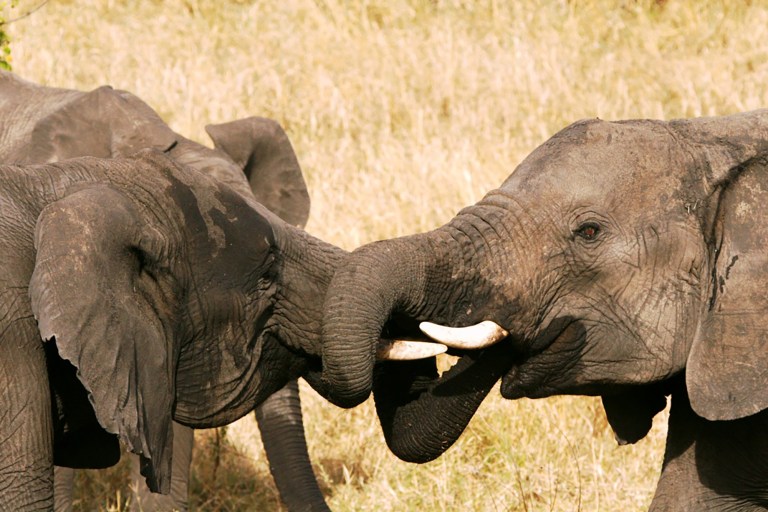
The ban is a slap in the face for Zimbabwe, Tanzania, Botswana, Namibia and Zambia which, at the Hwange Elephant Summit earlier this month, signed a declaration demanding the right to sell their ivory stockpiles. (Photo: Conservation Action Trust)
The ban is a victory for conservation NGOs in the UK which have been campaigning for many years to close the market.
Previous efforts by some southern African countries were soundly rejected by a large majority of parties at CITES CoP18 in 2019, on the basis that legal trade would negatively affect elephant populations and fuel organised criminality.
The ban is a slap in the face for Zimbabwe, Tanzania, Botswana, Namibia and Zambia which, at the Hwange Elephant Summit earlier this month, signed a declaration demanding the right to sell their ivory stockpiles.
It demanded non-interference from CITES on domestic trade, sovereignty of states and their right to monetise local wildlife. It criticised decisions influenced by “non-affected nations” and animal welfare organisations and called for a review of CITES membership in the face of its “continued unscientific and unwarranted decision-making processes”.
In the past, sales of ivory have increased demand and stimulated poaching.
International trade in ivory has been banned since 1989, following a 10-year period in which African elephant numbers declined by 50% from 1.3 million to 600,000.
However, in 1999 and 2008, CITES allowed “one-off sales” of stockpiled ivory — to disastrous effect.
The intention of CITES in approving the one-off ivory sales was to undercut the black market price of poached ivory. The plan failed miserably. Instead, the sales led to an increase in demand and an increase in elephant poaching.
The 2008 ivory sale was followed by a 66% increase in illegally traded ivory and a 71% increase in ivory smuggling, as well as a further decline in elephant numbers of 30% to 415,000 by 2016.
Responding to the Hwange Elephant Summit, 50 conservation organisations worldwide issued a statement saying “at a time when demand for ivory is at a historic low and awareness of the need for sustained biodiversity is at a historic high, we urge the international community and policymakers to resist attempts by Zimbabwe and Southern African countries to restart ivory trade”.
The UK ivory ban is a big step in that direction.
A joint NGO statement welcoming the UK ban said it hoped that, in implementing the ban, Britain would speak out against renewed efforts to reopen ivory trade at the 19th meeting of the Conference of the Parties to CITES, which takes place in November 2022 in Panama. DM/OBP

As far as the new UK Ivory Act is concerned, these tusks should not be parted from their elephants. (Photo: Conservation Action Trust)
By Don Pinnock | 07 Jun 2022
The UK Ivory Act came into force on Monday, 6 June, outlawing all ivory trade in Britain apart from a few narrow exemptions.
___________________________________________________________________________________________________________________________
From this week, dealing in almost all items made of or containing elephant ivory, regardless of their age, is illegal in Great Britain, the world’s leading exporter of antique ivory.
There are a few exemptions, which include portrait miniatures, musical instruments, items with low ivory content, sales to qualifying museums and rare/important items.
Those who break the law face prosecution and a fine of up to £250,000 or up to five years’ imprisonment.
This is good news for Africa’s elephants, which have suffered massive poaching to a point where, last year, the International Union for Conservation of Nature listed savanna elephants as endangered and forest elephants as critically endangered.
In the past 30 years, forest elephant numbers fell by 86% and within 50 years savanna elephant numbers dropped by 60%.
In 2015, most African elephant range states called for the urgent closure of all domestic ivory markets worldwide. This was closely followed by a resolution adopted by member governments of the UN wildlife trade organisation CITES, calling for countries to close remaining domestic ivory markets.
Many countries heeded this call. The United States enacted major restrictions to close its market and China, which was once home to the world’s largest legal ivory market, closed its market in 2017.
This was followed by countries as diverse as Singapore and a number of African countries. The European Union has yet to follow suit, although it has published new, tougher guidelines.
The road to implementation of the UK Ivory Act has been slow.
The government first pledged to close its ivory market in 2010, but it took a further seven years before a public consultation on the matter opened towards the end of 2017. This eventually received more than 70,000 responses, the overwhelming majority favouring a comprehensive ban, which also enjoyed vital cross-party parliamentary support.

The ban is a slap in the face for Zimbabwe, Tanzania, Botswana, Namibia and Zambia which, at the Hwange Elephant Summit earlier this month, signed a declaration demanding the right to sell their ivory stockpiles. (Photo: Conservation Action Trust)
The ban is a victory for conservation NGOs in the UK which have been campaigning for many years to close the market.
Previous efforts by some southern African countries were soundly rejected by a large majority of parties at CITES CoP18 in 2019, on the basis that legal trade would negatively affect elephant populations and fuel organised criminality.
The ban is a slap in the face for Zimbabwe, Tanzania, Botswana, Namibia and Zambia which, at the Hwange Elephant Summit earlier this month, signed a declaration demanding the right to sell their ivory stockpiles.
It demanded non-interference from CITES on domestic trade, sovereignty of states and their right to monetise local wildlife. It criticised decisions influenced by “non-affected nations” and animal welfare organisations and called for a review of CITES membership in the face of its “continued unscientific and unwarranted decision-making processes”.
In the past, sales of ivory have increased demand and stimulated poaching.
International trade in ivory has been banned since 1989, following a 10-year period in which African elephant numbers declined by 50% from 1.3 million to 600,000.
However, in 1999 and 2008, CITES allowed “one-off sales” of stockpiled ivory — to disastrous effect.
The intention of CITES in approving the one-off ivory sales was to undercut the black market price of poached ivory. The plan failed miserably. Instead, the sales led to an increase in demand and an increase in elephant poaching.
The 2008 ivory sale was followed by a 66% increase in illegally traded ivory and a 71% increase in ivory smuggling, as well as a further decline in elephant numbers of 30% to 415,000 by 2016.
Responding to the Hwange Elephant Summit, 50 conservation organisations worldwide issued a statement saying “at a time when demand for ivory is at a historic low and awareness of the need for sustained biodiversity is at a historic high, we urge the international community and policymakers to resist attempts by Zimbabwe and Southern African countries to restart ivory trade”.
The UK ivory ban is a big step in that direction.
A joint NGO statement welcoming the UK ban said it hoped that, in implementing the ban, Britain would speak out against renewed efforts to reopen ivory trade at the 19th meeting of the Conference of the Parties to CITES, which takes place in November 2022 in Panama. DM/OBP
"Education is the most powerful weapon which you can use to change the world." Nelson Mandela
The desire for equality must never exceed the demands of knowledge
The desire for equality must never exceed the demands of knowledge
- Lisbeth
- Site Admin
- Posts: 67457
- Joined: Sat May 19, 2012 12:31 pm
- Country: Switzerland
- Location: Lugano
- Contact:
Re: Ivory Trade
MOZAMBIQUE: AUTHORITIES SEIZE HUGE HAUL OF ELEPHANT TUSKS BOUND FOR DUBAI
Club of Mozambique - 22.03.2024
The Criminal Investigation Service (SERNIC) and Mozambique Tax Authority (AT) yesterday intercepted a 20-foot container containing 651 pieces of elephant tusk ivory at the port of Maputo. The consignment was bound for Dubai.
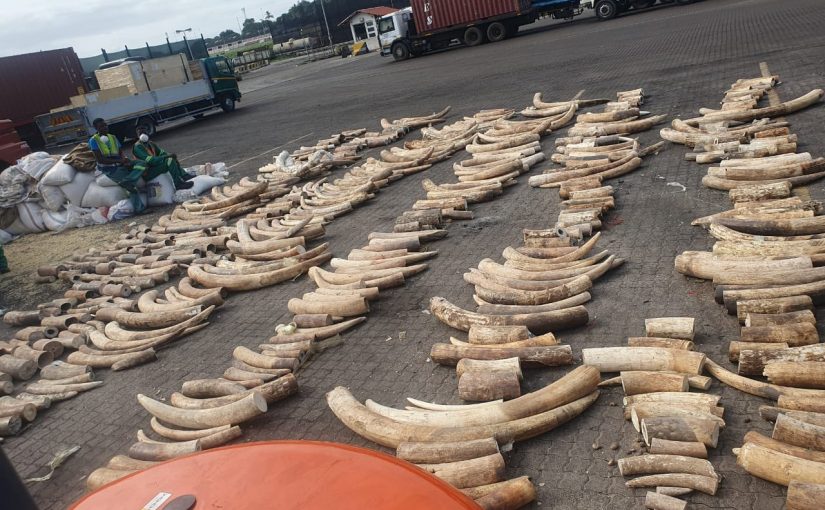
Photo via Alexandre Nhampossa/X
According to Moçambique Bio, the prohibited items were hidden in the centre of the container, surrounded by bags of corn.
According to the same publication, efforts are now underway to identify the exporter and customs broker of the container.
Meanwhile, lawyer David Ucama said that SERNIC would notify the National Administration of Conservation Areas (ANAC) so it could carry out an examination of the seized products.
“SERNIC will inform ANAC to carry out the investigation and be the faithful custodian, as it usually has been,” the biodiversity conservation lawyer said.
An anonymous Mozambican wildlife crime expert told Mozambique Bio: “Based on the photos I had access to, and given the quality of the ivory, it must be not only from Mozambique, but also from organised crime in neighbouring countries.”
SERNIC spokesperson Leonardo Simbine said that the Tax Authority would presently give a press conference on the matter.

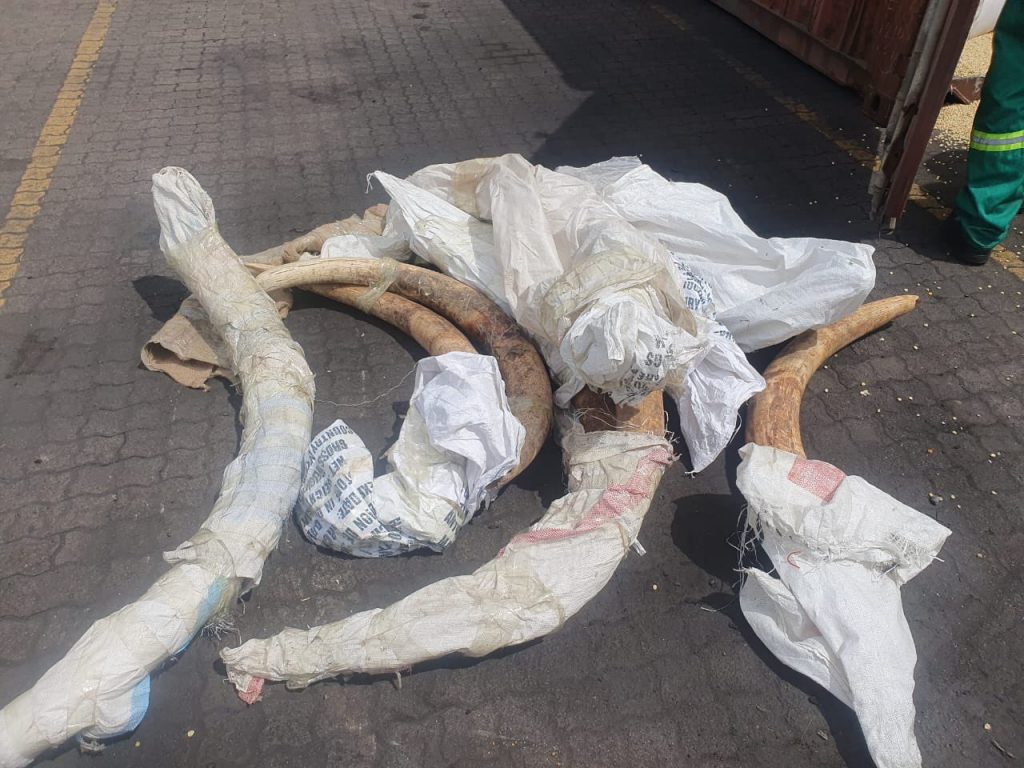

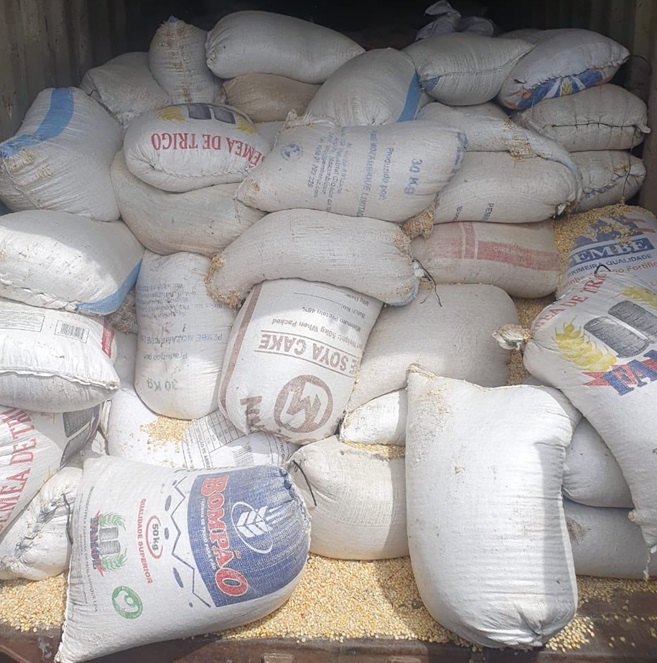
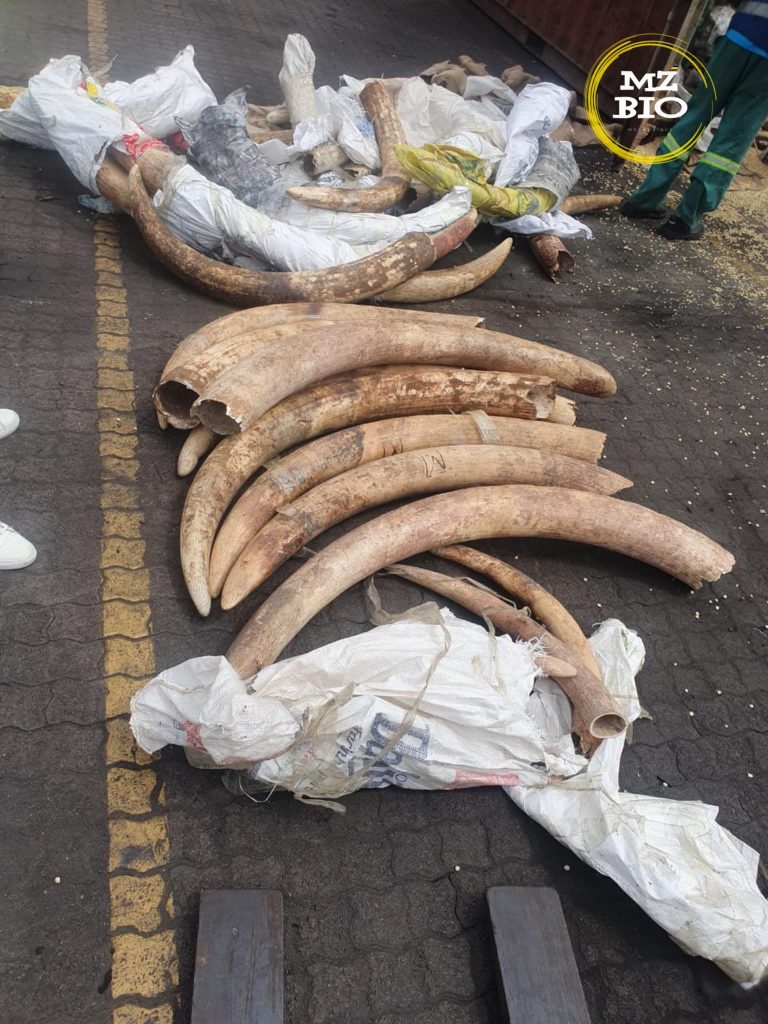
Original source: https://clubofmozambique.com/news/mozam ... os-256096/
Club of Mozambique - 22.03.2024
The Criminal Investigation Service (SERNIC) and Mozambique Tax Authority (AT) yesterday intercepted a 20-foot container containing 651 pieces of elephant tusk ivory at the port of Maputo. The consignment was bound for Dubai.

Photo via Alexandre Nhampossa/X
According to Moçambique Bio, the prohibited items were hidden in the centre of the container, surrounded by bags of corn.
According to the same publication, efforts are now underway to identify the exporter and customs broker of the container.
Meanwhile, lawyer David Ucama said that SERNIC would notify the National Administration of Conservation Areas (ANAC) so it could carry out an examination of the seized products.
“SERNIC will inform ANAC to carry out the investigation and be the faithful custodian, as it usually has been,” the biodiversity conservation lawyer said.
An anonymous Mozambican wildlife crime expert told Mozambique Bio: “Based on the photos I had access to, and given the quality of the ivory, it must be not only from Mozambique, but also from organised crime in neighbouring countries.”
SERNIC spokesperson Leonardo Simbine said that the Tax Authority would presently give a press conference on the matter.





Original source: https://clubofmozambique.com/news/mozam ... os-256096/
"Education is the most powerful weapon which you can use to change the world." Nelson Mandela
The desire for equality must never exceed the demands of knowledge
The desire for equality must never exceed the demands of knowledge
- Lisbeth
- Site Admin
- Posts: 67457
- Joined: Sat May 19, 2012 12:31 pm
- Country: Switzerland
- Location: Lugano
- Contact:
Re: Ivory Trade
Our laser technique can tell apart elephant and mammoth ivory – here’s how it may disrupt the ivory trade
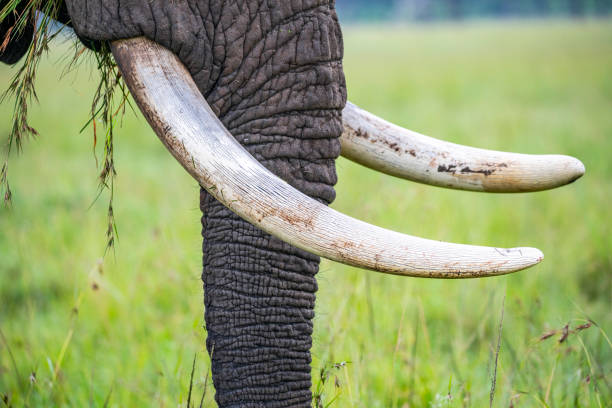
Rebecca Shepherd, Senior Lecturer in Anatomy, University of Bristol
In recent years, the global trade in elephant ivory has faced significant restrictions in an effort to protect dwindling elephant populations. Many countries have stringent controls on the trade of elephant ivory. The sale of mammoth ivory, sourced primarily from long-extinct species, however, remains unregulated.
But it’s a significant challenge for customs and law enforcement agencies to distinguish between ivory from extinct mammoths and living elephants. This is a process that is both time-consuming and requires destroying the ivory.
Now our new study, published in PLOS ONE, presents a major breakthrough – using a well known laser technique to tell mammoth and elephant ivory apart.
Our results couldn’t come soon enough. The number of African elephants has dramatically declined from approximately 12 million a century ago to about 400,000 today.
Annually, over 20,000 elephants are poached for ivory, primarily in Africa. This decline not only disrupts ecological balance, but also diminishes biodiversity. Ultimately, it highlights the urgent need for conservation efforts to protect these species.
The hunt for mammoth ivory is also a problem. The new regulations are leading to a rise in the modern-day “mammoth hunter”. These are people who deliberately set out to excavate mammoth remains from the Siberian permafrost in the summer months.
Driven by the lucrative market for mammoth ivory, these hunters undertake expeditions in remote Arctic regions, where permafrost melting is accelerated by climate change. This has made previously inaccessible mammoth tusks more reachable.
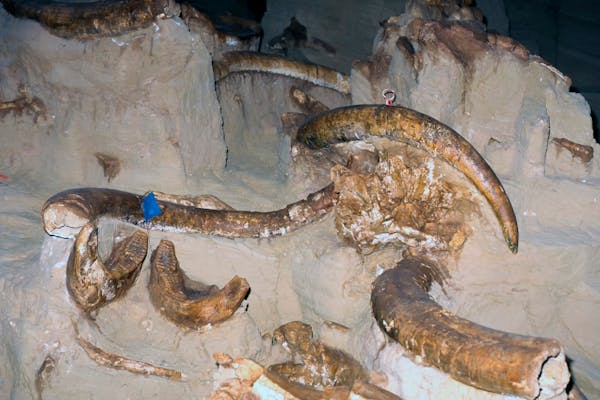
Mammoth fossils being unearthed. Malachi Jacobs/Shutterstock
This activity not only has commercial implications. It also raises significant ethical and environmental concerns. That’s because it disturbs preserved ecosystems and involves the extraction of resources that have great value to paleontological science.
Laser insights
Our study from the University of Bristol, in collaboration with Lancaster University and the Natural History Museum, introduces a potential game-changer. We use a non-invasive laser technique known as Raman spectroscopy to identify the origin of a piece of ivory.
The method works by analysing the biochemical makeup of the ivory, which consists primarily of mineralised tissue composed of collagen (the flexible organic component) and hydroxyapatite (a hard inorganic mineral, containing calcium).
Raman spectroscopy is a well established technique. It has previously demonstrated applications that range from identifying whisky, studying archeological human bones from the Mary Rose ship, understanding how turkey tendons develop and to even identifying the purity of meat sold by the food industry.
The technique works by directing a laser light onto the ivory sample. The energy from the light is temporarily absorbed by the bonds between molecules in the sample, and then almost instantly re-released. This released light scatters back with more or less energy than the initial laser light sent to the sample.
This carries information about the molecular vibrations within the material – providing a unique pattern of light for each type of ivory. The analysis involves studying the differences between these unique fingerprints.
Our study analysed elephant and mammoth samples provided by the Natural History Museum, London. It demonstrated that not only could the technique distinguish between mammoth and elephant ivory, it could also spot differences in ivory from living elephant species.
In fact, we successfully differentiated between ivory from the extinct woolly mammoth (Mammuthus primigenius) and two species of elephants still walking the Earth today (Loxodonta and Elephas maximus).
Important implications
This method offers several advantages over traditional techniques for ivory analysis. Raman spectroscopy is non-destructive and can be performed quickly. This makes it an ideal tool for customs officials who need to make rapid decisions. Our study was conducted on a benchtop spectrometer (a device which breaks up light by wavelength) within a laboratory. But research suggests cheaper and portable, handheld Raman spectrometers could offer equivalent results.
Further research will be needed to refine the technique and expand the database of ivory signatures. We are working with Worldwide Wildlife Hong Kong and the Foreign and Commonwealth Development Office to develop this technique.
More data will ultimately enhance the accuracy of species identification. It could potentially help us detect even finer distinctions – such as the age of the ivory or specific environmental conditions where the elephants or mammoths lived.
There are also other non-destructive techniques, such as X-Ray fluorescence spectroscopy, which could be used as a complementary method to identify the geographical region from which the ivory was taken.
As this technique becomes more accessible and widely adopted, it may become key in global conservation efforts, helping to prevent the illegal trade of elephant ivory.

Rebecca Shepherd, Senior Lecturer in Anatomy, University of Bristol
In recent years, the global trade in elephant ivory has faced significant restrictions in an effort to protect dwindling elephant populations. Many countries have stringent controls on the trade of elephant ivory. The sale of mammoth ivory, sourced primarily from long-extinct species, however, remains unregulated.
But it’s a significant challenge for customs and law enforcement agencies to distinguish between ivory from extinct mammoths and living elephants. This is a process that is both time-consuming and requires destroying the ivory.
Now our new study, published in PLOS ONE, presents a major breakthrough – using a well known laser technique to tell mammoth and elephant ivory apart.
Our results couldn’t come soon enough. The number of African elephants has dramatically declined from approximately 12 million a century ago to about 400,000 today.
Annually, over 20,000 elephants are poached for ivory, primarily in Africa. This decline not only disrupts ecological balance, but also diminishes biodiversity. Ultimately, it highlights the urgent need for conservation efforts to protect these species.
The hunt for mammoth ivory is also a problem. The new regulations are leading to a rise in the modern-day “mammoth hunter”. These are people who deliberately set out to excavate mammoth remains from the Siberian permafrost in the summer months.
Driven by the lucrative market for mammoth ivory, these hunters undertake expeditions in remote Arctic regions, where permafrost melting is accelerated by climate change. This has made previously inaccessible mammoth tusks more reachable.

Mammoth fossils being unearthed. Malachi Jacobs/Shutterstock
This activity not only has commercial implications. It also raises significant ethical and environmental concerns. That’s because it disturbs preserved ecosystems and involves the extraction of resources that have great value to paleontological science.
Laser insights
Our study from the University of Bristol, in collaboration with Lancaster University and the Natural History Museum, introduces a potential game-changer. We use a non-invasive laser technique known as Raman spectroscopy to identify the origin of a piece of ivory.
The method works by analysing the biochemical makeup of the ivory, which consists primarily of mineralised tissue composed of collagen (the flexible organic component) and hydroxyapatite (a hard inorganic mineral, containing calcium).
Raman spectroscopy is a well established technique. It has previously demonstrated applications that range from identifying whisky, studying archeological human bones from the Mary Rose ship, understanding how turkey tendons develop and to even identifying the purity of meat sold by the food industry.
The technique works by directing a laser light onto the ivory sample. The energy from the light is temporarily absorbed by the bonds between molecules in the sample, and then almost instantly re-released. This released light scatters back with more or less energy than the initial laser light sent to the sample.
This carries information about the molecular vibrations within the material – providing a unique pattern of light for each type of ivory. The analysis involves studying the differences between these unique fingerprints.
Our study analysed elephant and mammoth samples provided by the Natural History Museum, London. It demonstrated that not only could the technique distinguish between mammoth and elephant ivory, it could also spot differences in ivory from living elephant species.
In fact, we successfully differentiated between ivory from the extinct woolly mammoth (Mammuthus primigenius) and two species of elephants still walking the Earth today (Loxodonta and Elephas maximus).
Important implications
This method offers several advantages over traditional techniques for ivory analysis. Raman spectroscopy is non-destructive and can be performed quickly. This makes it an ideal tool for customs officials who need to make rapid decisions. Our study was conducted on a benchtop spectrometer (a device which breaks up light by wavelength) within a laboratory. But research suggests cheaper and portable, handheld Raman spectrometers could offer equivalent results.
Further research will be needed to refine the technique and expand the database of ivory signatures. We are working with Worldwide Wildlife Hong Kong and the Foreign and Commonwealth Development Office to develop this technique.
More data will ultimately enhance the accuracy of species identification. It could potentially help us detect even finer distinctions – such as the age of the ivory or specific environmental conditions where the elephants or mammoths lived.
There are also other non-destructive techniques, such as X-Ray fluorescence spectroscopy, which could be used as a complementary method to identify the geographical region from which the ivory was taken.
As this technique becomes more accessible and widely adopted, it may become key in global conservation efforts, helping to prevent the illegal trade of elephant ivory.
"Education is the most powerful weapon which you can use to change the world." Nelson Mandela
The desire for equality must never exceed the demands of knowledge
The desire for equality must never exceed the demands of knowledge


